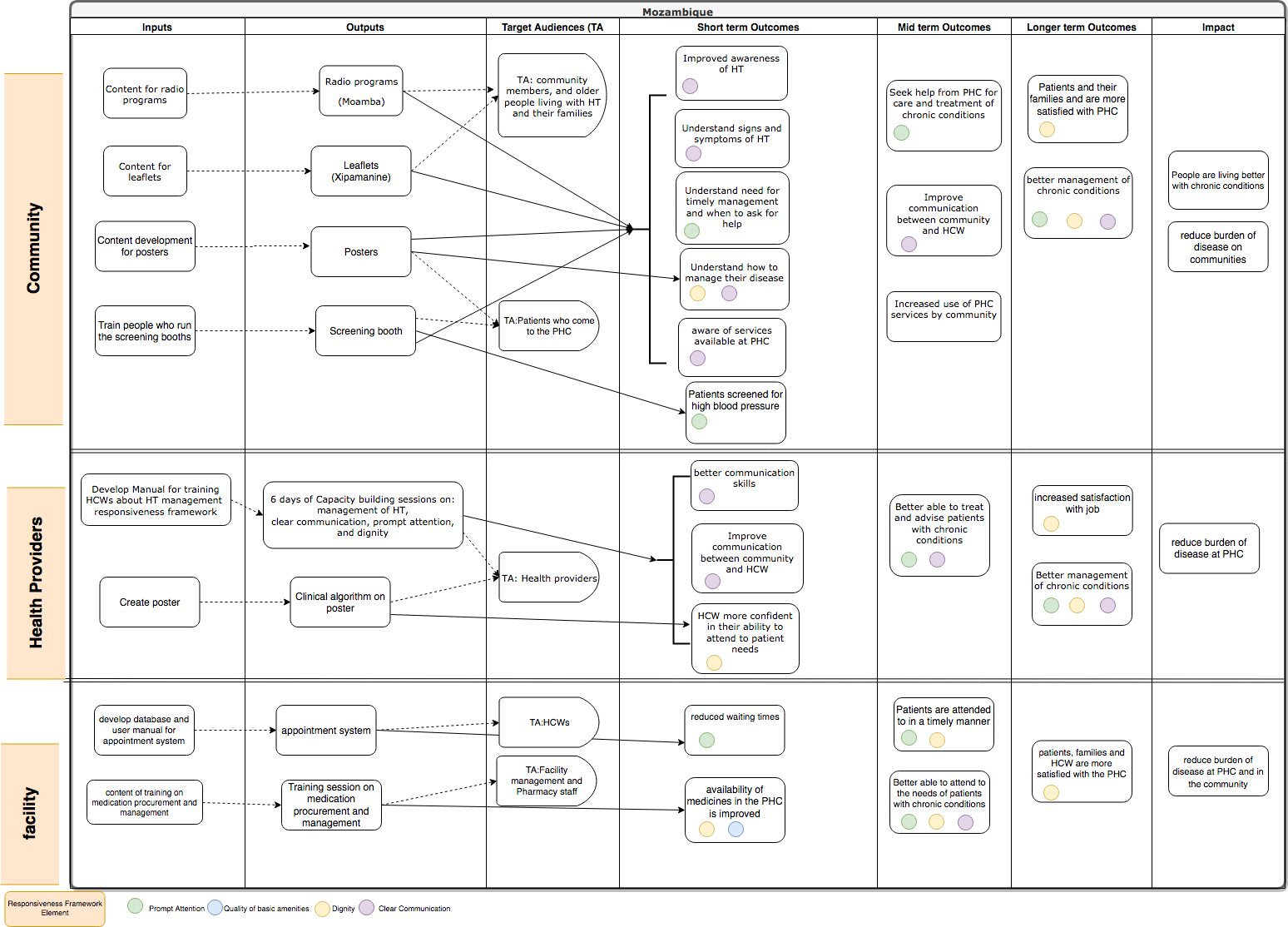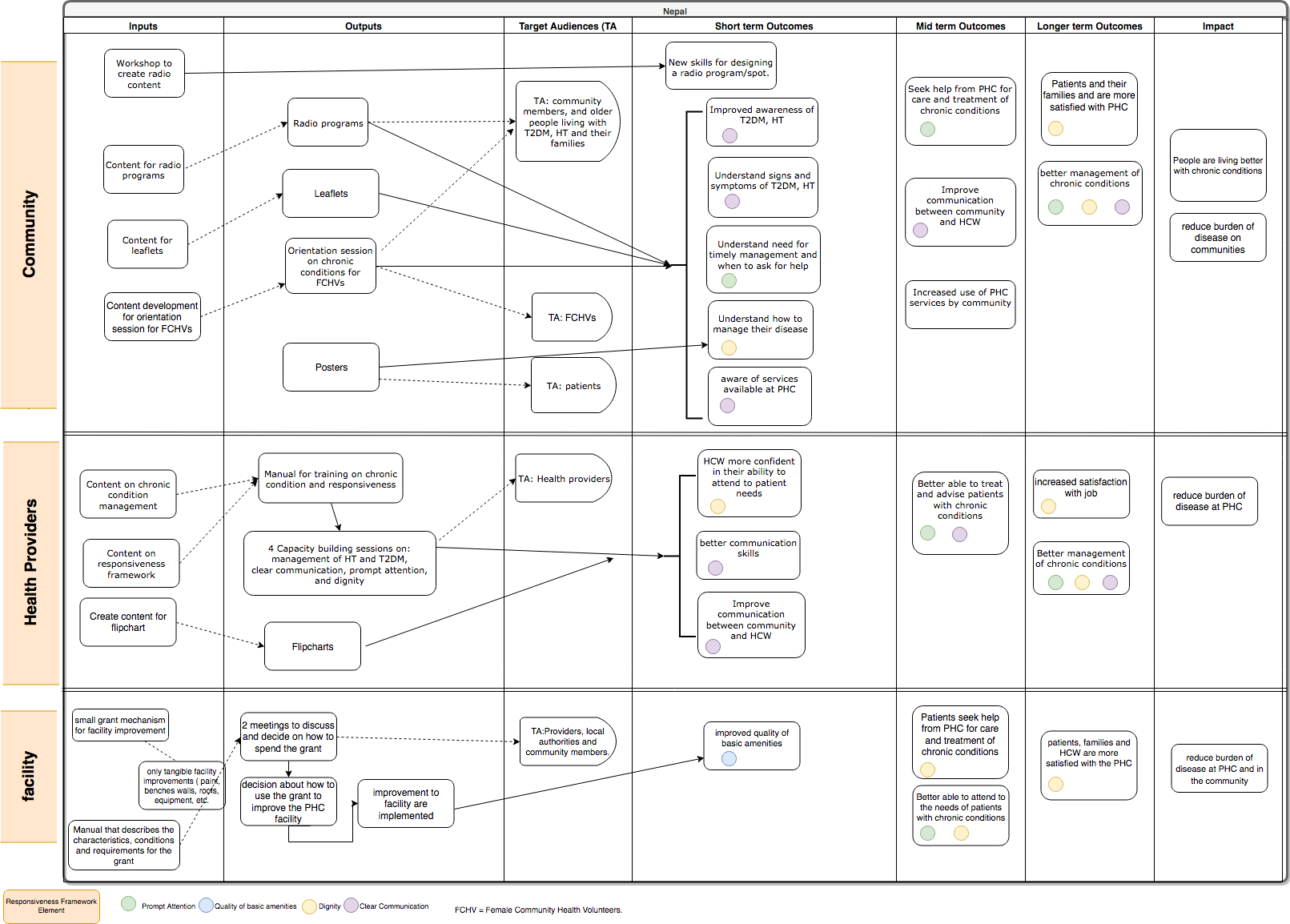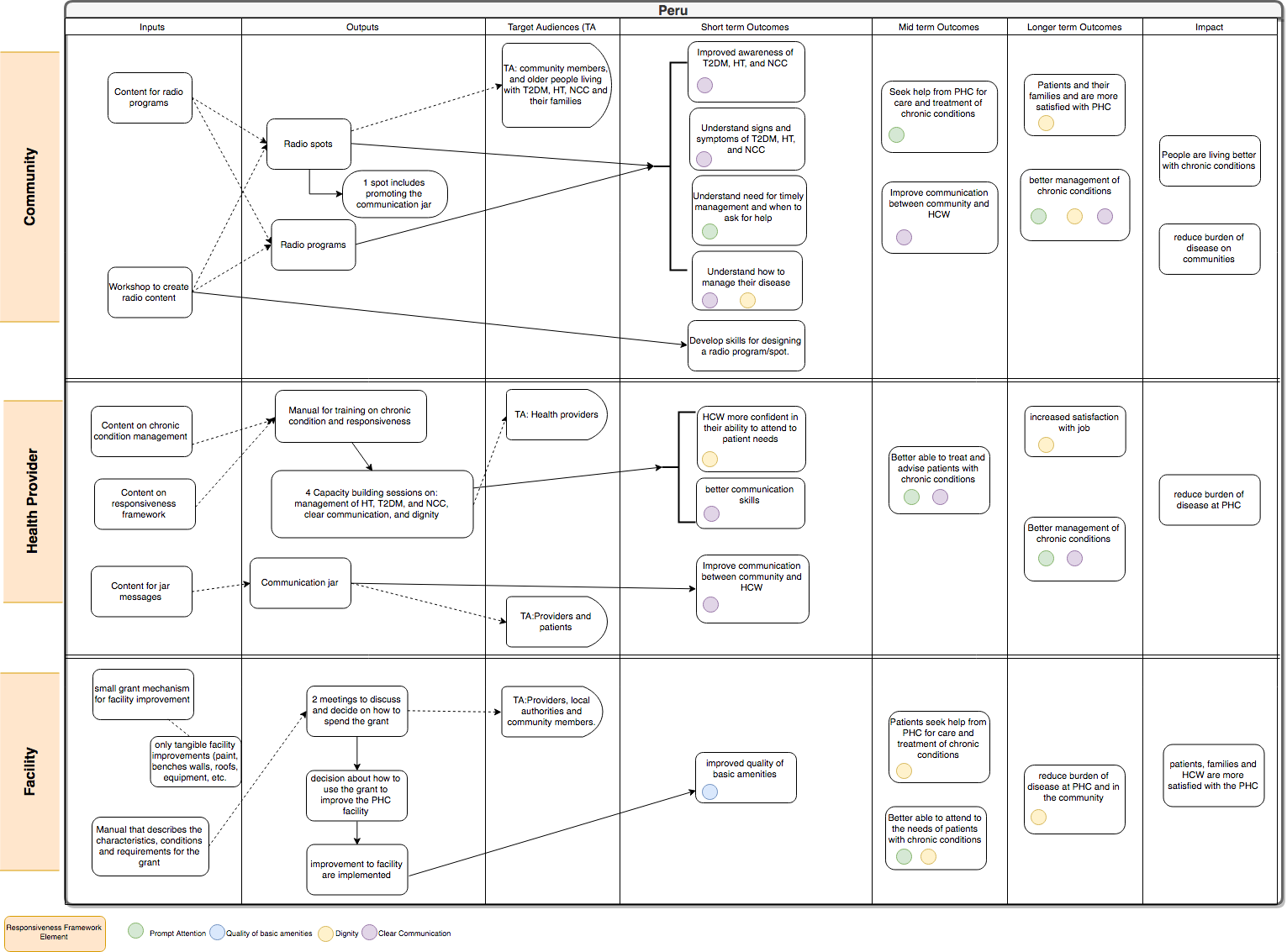In addition to behavioral outcomes, health outcomes, and their determinants, we show in these logic models which outcomes are related to the WHO Responsiveness Framework. In each country, stakeholders chose, through a co-creation and consultative process, which domains/elements of the Responsiveness Framework was most relevant and important. This is reflected in the logic models shown below and visually communicates, once again, how much synergy there across countries and how embedding activities into existing practices and acceptable channels should improve health systems and community’s response to the burned of chronic conditions in their setting. We believe that the models can be scaled up and adapted to various similar settings with relative ease.
We have mapped the interventions to the expected outcomes, which forms our «Theory of Change».
Mozambique

Nepal

Peru

